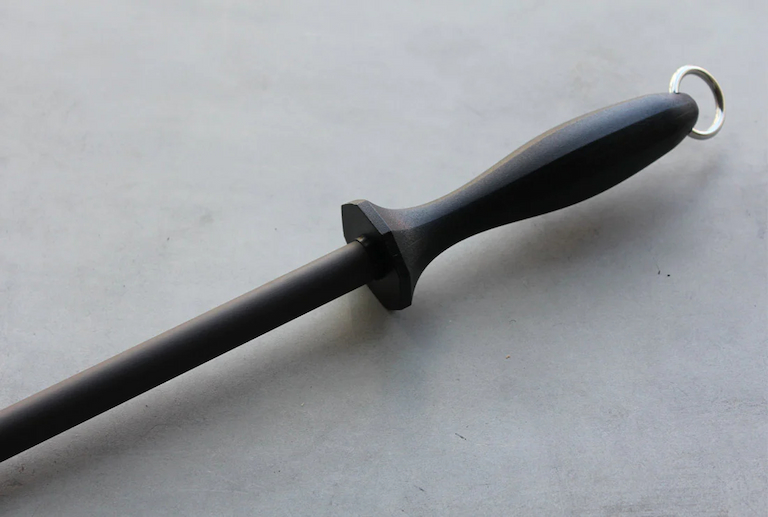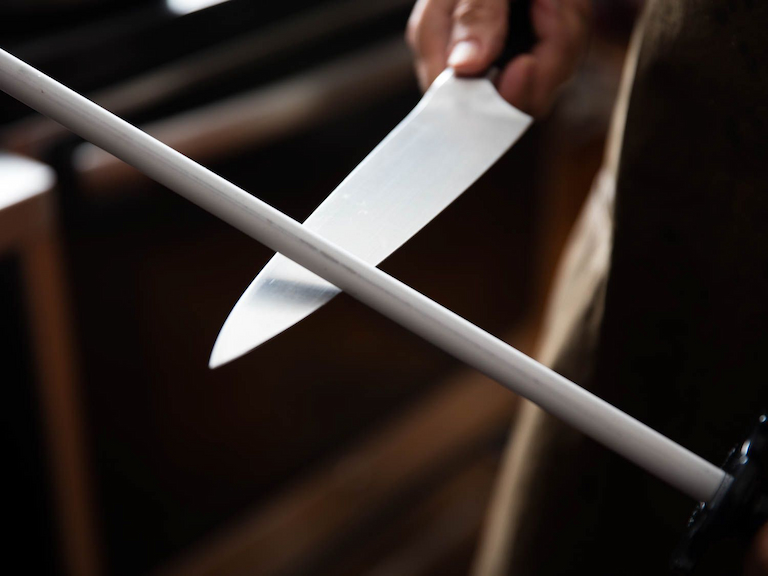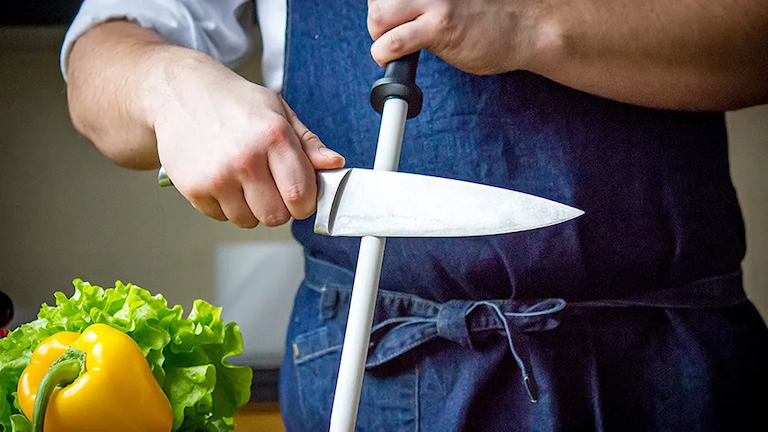Contents
A suitable, sharp knife is one of the most critical instruments in a cook’s armoury. The way a knife is stored, the material of the cutting board (hint: avoid glass), and the material and style of the knife all play a role in how long its blade stays sharp (for example, Japanese-style knives, often made of more rigid steel, can dull faster than softer German-style knives, which bend and warp). Knowing when to hone or sharpen your knives is crucial for keeping your blades sharp for as long as possible. While sharpening and honing are used to keep a knife’s edge in good shape, they accomplish different goals.
What Does a Honing Rod Do?

Regular use can dull and deform the knife’s edge, so sharpening and honing are necessary to keep it in good shape. If you use a whetstone to sharpen your blade, the pressure will wear away some of the steel and make a new, sharper edge.
On the other hand, honing includes running each side of the knife down an honing rod an equal number of times. Like a toothbrush cleans your teeth, the rod will keep your blades in tip-top shape. You brush your teeth, so you don’t have to go to the dentist as often; you use your honing rod, so you don’t need to sharpen your knife as often. Using the proper honing rods for your blades regularly keeps knives’ edges sharp and fixes things quickly by realigning the edge for a longer time.
How often you use your knives will determine how often you need to hone them. A lot of the time, chefs sharpen their knives every day as they use them for more tasks than any home cook. You can tell whether it’s time to sharpen your knife by comparing it to its usual level of sharpness. Most experts also recommend a quick clean-down with some steel wool before any significant meal preparation.
What Material Is Best for a Honing Rod?

Ceramic, diamond and stainless steel are the three most common types of honing steel on the market. There isn’t one best material for honing steel, as each has pros and cons. The types of knives you use immensely impact the correct honing rod material for you.
“The wand chooses the wizard, Harry”: not every rod works with every steel – for best results, your honing rod should be harsher than the knife steel. In contrast to the softness of German knives, the extreme hardness of Japanese blades necessitates the use of ceramic.
Ceramic steels (more accurately called ceramics) can remove a minimal piece of metal from your knives during the honing process, which shows up as grey streaks on the ceramic rod. That means they provide a moderate edge enhancement. However, ceramic is mild enough that it won’t permanently damage your blade, making it a good option for frequent honers who would preferably put off a full sharpening for as long as possible.
Other Considerations
Your lifestyle, level of knife expertise, and cooking frequency all play a role in determining which honing steel is best for you. There are, however, a few universal qualities that any good honing steel should have. Excellent steel should have a wide crossguard between the blade and the grip to prevent your hand from accidentally sliding down the steel.
When I browse the range of honing rods available online, one of the most important things I look at is how long one is. Lengthier steel gives you more room to move the knife, and it’s paramount when honing longer knives like chef’s knives and slicers. It’s not essential when steeling smaller knives like paring knives. (It’s important to note that serrated knives are incredibly challenging to sharpen because they have teeth.)
As a general rule, it should be at least 30 cm long. That’s the length of the steel rod, not the handle, and the knife won’t hit the work surface below. If your knives are 25 cm or longer, you might want to look for a longer rod. But 30 cm is suitable for most of us.
How to Use a Honing Rod?

Here are a few simple steps to help you get an idea of how to keep your blades sharp by regularly honing them.
Step 1
Hold the steel in one hand and the knife by the handle with the other. Both hands should be pointing up. They ought to get together in an easy, upside-down V shape.
Step 2
Place the heel of the blade against the steel about 2 cm from the steel’s tip. The blade should be set up at an angle of 15° to degree with the steel. The angle should be 20° for German and thicker knives, and for Japanese or thinner knives, it should be 15°.
Step 3
Use light to medium pressure to move the knife down the steel and towards the blade’s tip. Take your time to keep the blade at the same angle as the steel. Accuracy is more important than speed.
Step 4
Do this once more on the other side of the knife blade with the same side of the steel. Keep switching sides for 5 to 10 strokes or until the edge is sharp.
Step 5
After you wash and dry your blade, it will be free of small pieces of steel.
Extra Honing Tips
- Don’t move the steel, only the knife.
- The steel should only touch the edge of your knife, not the side of the blade (you don’t want to scratch the blade). Be careful not to cut your hand when you hold the steel. Use a slow, even stroke so you can always have complete control of the knife.
- When honing doesn’t work anymore, it’s time to use a stone.

